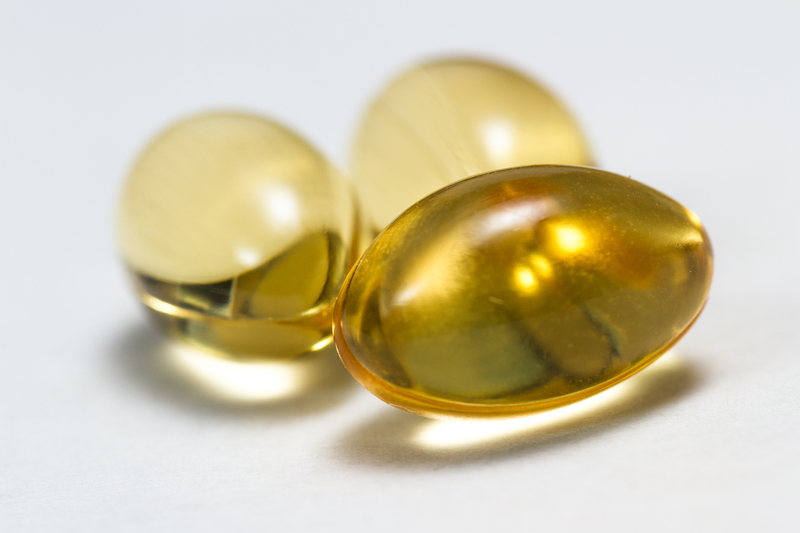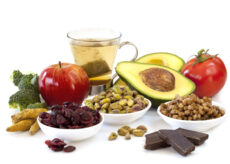How Do I Know if My CBD Is Real and NOT Fake?

EXPLOSIVE. There’s perhaps no better word in the English language to describe the demand for CBD products in the United States. Right now, one in seven Americans claims to use CBD on the regular, according to a recent Gallup poll. And the reality is that those conservative numbers are likely to increase as more CBD makes its way onto the market. And as more people realize the potential healing benefits that hemp extracts may be able to offer.
In fact, the Brightfield Group estimates the U.S. CBD product market alone to be worth over $23.7 billion by 2023, as CBD finds its way into more consumer product categories, including food and beverage, pharmaceuticals, cosmetics, and health and wellness.
With such a large sum of money at stake, you’d better believe there’s a surfeit of dishonest, fly-by-night companies out there looking to scoop up their piece of the pie with sketchy, low-quality CBD products. Thus, begs the question: How do you know if your CBD is real and not fake?+
Please allow me the pleasure of answering that critical question.
CBD Buyer Beware
CBD products are everywhere. They can be purchased online, over the counter, and at cannabis-specific dispensaries throughout the country. Despite FDA oversight, regulators can’t keep up with the growing market. As Marcel Bonn-Miller, an adjunct assistant professor of psychology in psychiatry at the University of Pennsylvania School of Medicine, put it, “It really is the Wild West. Joe Bob who starts up a CBD company could say whatever the hell he wants on the label and sell it to people.”
In a study published in the prestigious Journal of the American Medical Association, Dr. Bonn-Miller and colleagues tested 84 CBD products (from 31 different companies) to see if the products contained the amount of CBD claimed on the label.
Shockingly (or maybe not), 69% did not meet label claims, and nearly one-half (43%) contained less CBD than labeled, with some products containing mere traces of CBD. Of course, if a product doesn’t include what you think it does, then it’s unlikely to do you any good. Alarmingly, THC was detected at higher than expected levels in 21% of the samples tested.
An investigation by NBC 4 in New York found less than half of the samples they had tested contained the stated amount of CBD inside the product. Some samples contained NONE at all. And, some samples contained dangerous amounts of lead (four times more than the legal limit).
Investigators from NBC 6 in Miami tested 35 CBD products from 7 different companies, and their testing revealed that 20 (57%) had less than half of the amount of CBD advertised on the label. Some had no CBD at all.
With the CBD products continuing to trend, fake companies are being exposed for using harmful chemicals and diluting products to exploit this growing popularity, resulting in higher profits for companies while leaving consumers with a potentially unsafe product.
In particular, third-party testing reveals two chemicals that continue to appear time and time again in lab tests for certain CBD tinctures: dextromethorphan (DXM) and 5F-ADB. These chemicals are potentially lethal in high doses. Dextromethorphan can be found in cough syrups and is known to be addictive and for abusive behaviors. And 5F-ADB has a very similar chemical composition to the synthetic drug K2 (which also goes by the street name “Spice”).
In other words, if you think, “CBD is CBD, and it doesn’t matter where it comes from or who I buy it from,” think again.
In addition to the deluge of impostor CBD products, companies are aggressively marketing their products using tactics that range from misleading to egregious to downright illegal. Most glaringly, many companies are making claims that their products can be used to treat specific medical conditions—a direct, malevolent violation of the law.
The take-home point is that there are companies simply lying about how much CBD is in their products—with some leaving CBD out altogether. Even more, many CBD products are laced with potentially dangerous toxic compounds. And a pet peeve of mine, companies are making egregious claims about their products.
How to Determine Your CBD is High-Quality
1. Is Your CBD Full-Spectrum?
When looking for a quality CBD product, you want to find one that is “Full-Spectrum, Hemp-Derived CBD-Rich Extract,” derived from natural hemp. This is because full-spectrum, hemp-derived extracts deliver, along with the CBD, all the other healthy compounds found in hemp, including:
- Phytocannabinoids, such as CBN, CBG, CBC, and CBDV
- Key terpenes, such as myrcene, pinene, limonene, and caryophyllene
- Flavonoids, like cannflavin A
Simply put, all these healthy, hemp-derived phytochemicals work better together, a phenomenon scientists call the “entourage effect.” Research indicates full-spectrum hemp is the best way to get your CBD because these additional compounds boost the effects of CBD and are full of healthy properties we are just now discovering.
These “entourage molecules” weren’t added to CBD to make it work better… they occur naturally just as Mother Nature intended.
Unfortunately, many CBD brands use only the cheaper “CBD isolate” form, which strips OUT all the other healthy phytocannabinoids, terpenes, and flavonoids.
Studies indicate you should be using full-spectrum, hemp-derived CBD extract as your primary, daily source. Believe me, if the product isn’t “full-spectrum, hemp-derived CBD-rich extract,” don’t use it as your primary CBD source. The isolate form is okay for the occasional CBD gummy or cream, but not as your primary daily dose.
2. Has Your CBD Products Been Independently Tested?
Finding quality CBD products as I have described really puts into perspective how important it is to find a company giving their CBD processing the quality control your body deserves. Perhaps most importantly, you want to find a CBD company that spends money getting their CBD products tested by independent labs.
Those tests should do two things…
- Ensure the potency and purity of the CBD in the product
- Check for dangerous heavy metals like lead, herbicides, pesticides, and other potentially toxic compounds
Don’t take this lightly… if you are not careful about where you get your CBD and the brand doesn’t offer access to independent third-party lab results right on the bottle, there is a good chance your CBD is either contaminated or doesn’t contain the right amount of CBD.
3. Does the Amount of CBD Per Serving Seem Too Good to Be True?
How CBD gets produced is another area of major concern. You have to extract it from the hemp plant in oil form. No way around it.
The two main extraction processes are:
- Supercritical CO2 extraction
- Ethanol extraction, which uses an alcohol base
Both methods can work if done correctly. However, each one has its drawbacks. You need to ensure your CBD comes from a company that safeguards against any residual chemicals left behind and all the healthy components of the hemp plant are left intact.
And here’s another sneaky trick to keep an eye out for… You may see a bottle that lists 500, 600, or 700 mg on its label, but that doesn’t mean it contains that amount of active CBD.
In fact, many products labeled this way don’t contain any CBD at all!
People are being fooled by this, paying hefty prices for something that has nothing more than oil from the hemp plant, which doesn’t provide the healing properties of CBD and the other healthy entourage compounds.
Might as well be using plain vegetable oil.
When it comes to quality CBD capsules or liquids, most will contain 10 to 15 mg of CBD per capsule or serving size.
So, if you see a brand advertising ultra-high levels of CBD per serving like 300, 400, or even 600 mg, just know it’s NOT possible.
You cannot fit that much CBD into a single capsule or liquid dropper. It’s like trying to put the liquid from a swimming pool into a water glass.
And be aware that most brands use CBD with “low oral bioavailability” in the body. In other words, only a fraction of the CBD ends up absorbed in the bloodstream.
This is another reason why many users never get good results from CBD, or they have to take super high amounts to feel the effect.
When you take quality CBD oil, you should feel it working within 30 minutes. I often describe it as a pleasant, calming sensation throughout the body that soothes physical pain and mental stress, while leaving you feeling mentally alert and focused.
4. Is Your CBD Product “Trust Scan Certified” (Extremely Important)
Now, I get that may all be a little overwhelming, so let me boil it down to one simple step you can take to tell if your CBD is real and not fake. Look for a CBD product that is Trust Scan Verified. This ensures your CBD product label has printed on it a QR code you can scan with your smartphone, which will take you directly to independent testing results provided by third-party labs. Those lab sheets verify the purity, potency, and safety of your CBD product, and it’s perhaps the single-most validating feature you can look for.
How Do I Know if My CBD Is Real and NOT Fake? A Recap
So, be sure the company offers the following items to verify you are getting real, high-quality CBD:
- Independent lab results that you can access simply by scanning the bottle
- The amount of CBD per capsule listed clearly on the label
- “Full-Spectrum, Hemp-Derived CBD-Rich Extract” on the label
- Trust Scan Verified QR Code is available on the label
And avoid products labeled as hemp oil with large amounts listed on the bottle.
When it comes to buying quality CBD, I always say, buyer beware!





